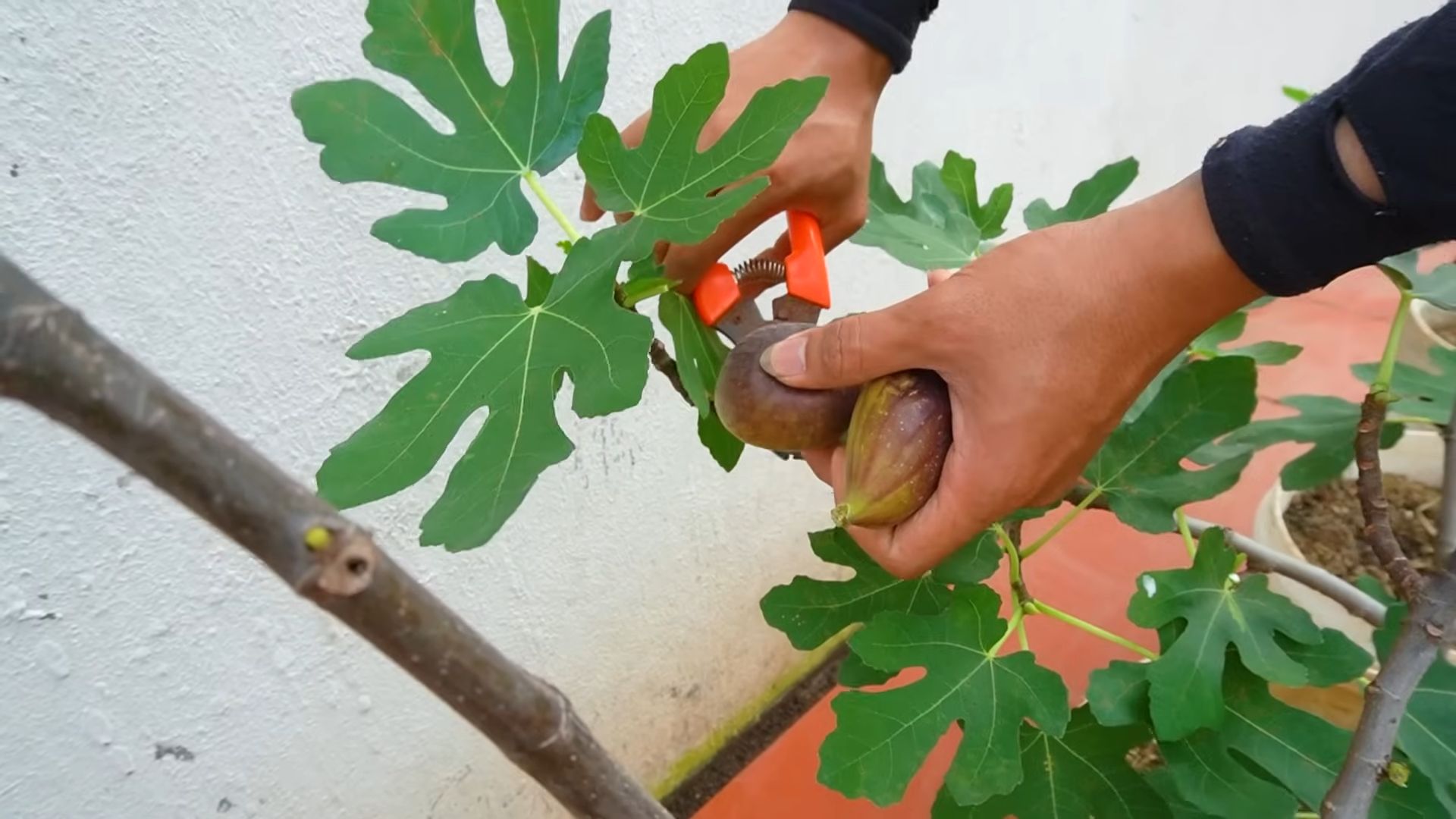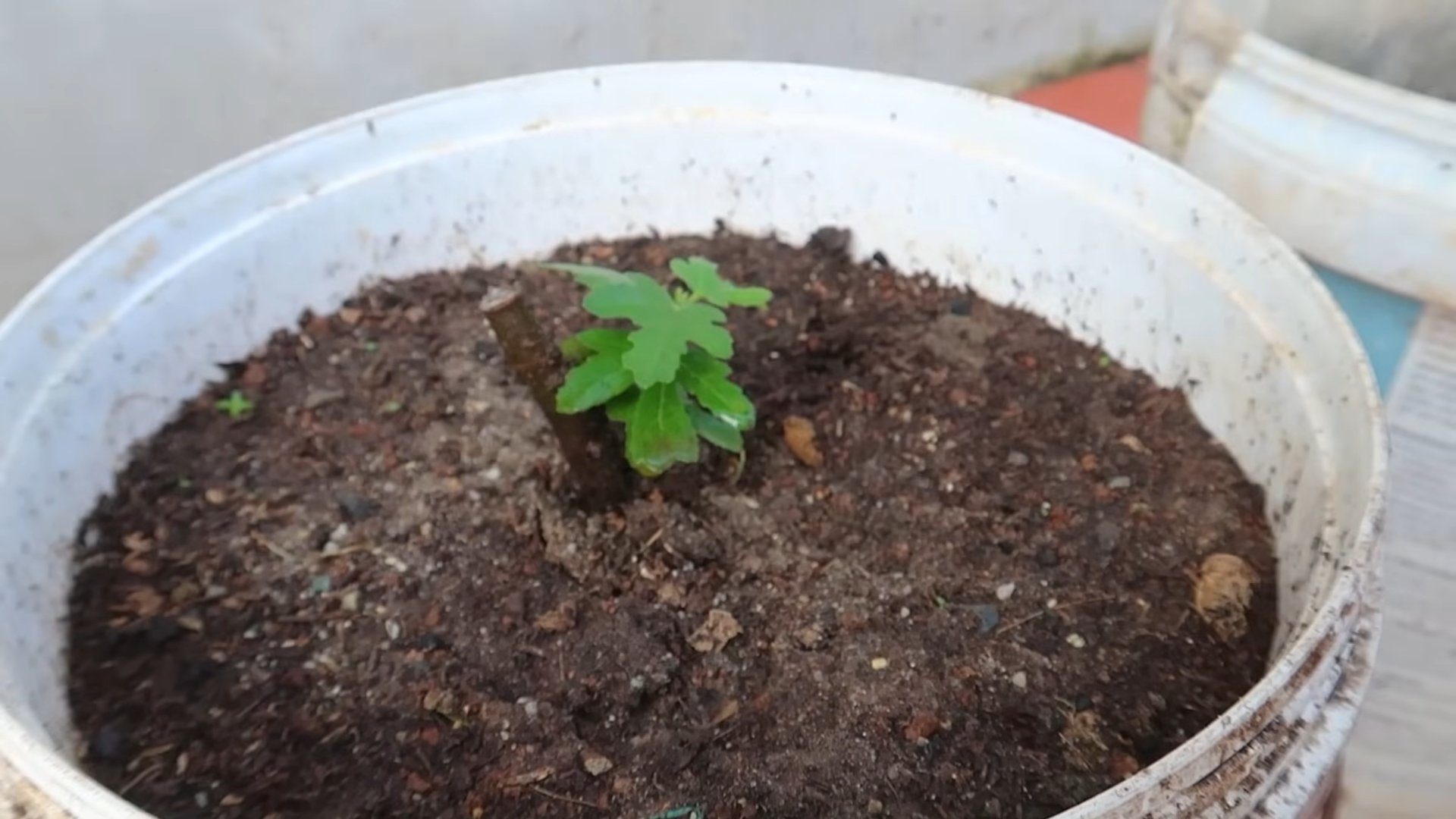Fast Growing Fig Technique: Imagine plucking sweet, juicy figs straight from your own garden, sooner than you ever thought possible! For centuries, figs have been cherished across cultures, from ancient Rome where they symbolized prosperity, to the Mediterranean where they are a staple ingredient. But let’s be honest, waiting years for your fig tree to mature and bear fruit can test even the most patient gardener.
That’s where this DIY guide comes in! I’m going to share a simple, yet incredibly effective, fast growing fig technique that will have you enjoying delicious figs much quicker than traditional methods. Forget the years of waiting – we’re talking about potentially harvesting your own figs in a fraction of the time.
Many gardeners struggle with slow-growing fig trees, often due to climate, soil conditions, or simply not knowing the right tricks. This guide will empower you to overcome those challenges and unlock the full potential of your fig tree. Whether you’re a seasoned gardener or just starting out, this easy-to-follow technique will transform your fig-growing experience. Get ready to enjoy the fruits (literally!) of your labor sooner than you ever imagined!

Supercharge Your Fig Tree: A DIY Fast-Growing Technique
Hey fellow fig fanatics! I’m so excited to share a technique I’ve been using to get my fig trees to grow like crazy. If you’re impatient like me and want to enjoy delicious figs sooner rather than later, this DIY hack is for you. It combines a few proven methods to create the ultimate fig-growing environment. Let’s get started!
Understanding the Basics: Why This Works
Before we dive into the how-to, let’s quickly understand why this technique is so effective. It focuses on three key elements:
* Root Stimulation: Encouraging a robust root system is crucial for overall plant health and faster growth. We’ll be using techniques to promote root development.
* Nutrient Boost: Figs are heavy feeders, meaning they need a good supply of nutrients to thrive. We’ll be providing a balanced diet to fuel their growth.
* Optimized Environment: Creating the ideal conditions, including proper sunlight, water, and temperature, will give your fig tree the best chance to flourish.
Materials You’ll Need
Here’s a list of everything you’ll need for this project. Don’t worry, most of it is readily available at your local garden center or online.
* Young Fig Tree: Choose a healthy fig tree variety that’s suitable for your climate. I recommend starting with a 1-3 year old tree.
* Large Pot (if planting in a container): Select a pot that’s at least 20 inches in diameter. Fabric pots are great for drainage and aeration.
* Well-Draining Potting Mix: A mix specifically formulated for fruit trees is ideal. You can also create your own by combining equal parts potting soil, perlite, and compost.
* Mycorrhizal Fungi: This beneficial fungi forms a symbiotic relationship with the roots, enhancing nutrient uptake.
* Slow-Release Fertilizer: Choose a fertilizer specifically formulated for fruit trees, with a balanced NPK ratio (Nitrogen, Phosphorus, Potassium).
* Epsom Salts: Magnesium sulfate helps with chlorophyll production and nutrient absorption.
* Compost Tea: A liquid fertilizer made by steeping compost in water. It’s packed with beneficial microbes and nutrients.
* Pruning Shears: For shaping and pruning your fig tree.
* Watering Can or Hose: For watering your fig tree.
* Mulch: Organic mulch, such as wood chips or straw, helps retain moisture and suppress weeds.
* Optional: Grow Light: If you live in an area with limited sunlight, a grow light can supplement natural light.
* Optional: Heat Mat: For early root stimulation, especially in cooler climates.
Step-by-Step Instructions: The Fast-Growing Fig Technique
Alright, let’s get our hands dirty! Follow these steps to give your fig tree the boost it needs.
1. Preparing the Planting Site (or Pot)
This step is crucial for setting the stage for success.
1. Choose the Right Location: Fig trees need at least 6-8 hours of direct sunlight per day. If you’re planting in the ground, select a sunny spot with well-draining soil. If you’re using a container, make sure you can easily move it to a sunny location.
2. Prepare the Soil (for in-ground planting): Amend the soil with plenty of compost and organic matter to improve drainage and fertility. Dig a hole that’s twice as wide as the root ball and just as deep.
3. Prepare the Potting Mix (for container planting): Mix your potting soil, perlite, and compost in a large container. Make sure the mix is well-aerated and drains freely.
4. Add Mycorrhizal Fungi: Sprinkle mycorrhizal fungi into the planting hole or mix it into the potting mix. This will help the roots establish quickly and efficiently.
2. Planting Your Fig Tree
Now for the main event!
1. Gently Remove the Fig Tree from its Container: Carefully loosen the roots with your fingers to encourage them to spread out.
2. Position the Tree: Place the fig tree in the planting hole or pot, ensuring that the top of the root ball is level with the surrounding soil.
3. Fill the Hole or Pot: Backfill the hole or pot with the prepared soil or potting mix, gently tamping it down to remove air pockets.
4. Water Thoroughly: Water the newly planted fig tree deeply to settle the soil and hydrate the roots.
3. The Nutrient Boost: Feeding Your Fig Tree
Figs are hungry plants, so let’s give them a feast!
1. Apply Slow-Release Fertilizer: Sprinkle slow-release fertilizer around the base of the tree, following the instructions on the package. This will provide a steady supply of nutrients over several months.
2. Epsom Salt Application: Dissolve 1 tablespoon of Epsom salts in 1 gallon of water. Water the fig tree with this solution every 2-4 weeks. This will help with chlorophyll production and nutrient absorption.
3. Compost Tea Treatment: Water your fig tree with compost tea every 2-4 weeks. This will provide a boost of beneficial microbes and nutrients. You can make your own compost tea by steeping compost in water for 24-48 hours, or you can purchase it pre-made.
4. Pruning for Growth and Shape
Pruning is essential for encouraging new growth and shaping your fig tree.
1. First Year Pruning: In the first year, focus on removing any dead, damaged, or crossing branches. You can also prune back the main branches by about one-third to encourage branching.
2. Subsequent Year Pruning: In subsequent years, prune your fig tree in late winter or early spring, before new growth begins. Remove any suckers (shoots that grow from the base of the tree), water sprouts (vigorous, upright shoots), and branches that are growing inward or crossing each other.
3. Shaping the Tree: Prune to create an open, vase-shaped structure that allows sunlight to penetrate the center of the tree. This will improve fruit production and air circulation.
5. Watering and Mulching
Proper watering and mulching are crucial for maintaining soil moisture and suppressing weeds.
1. Watering Schedule: Water your fig tree deeply whenever the top inch of soil feels dry to the touch. Avoid overwatering, as this can lead to root rot.
2. Mulching: Apply a 2-3 inch layer of organic mulch around the base of the tree, keeping it a few inches away from the trunk. This will help retain moisture, suppress weeds, and regulate soil temperature.
6. Optimizing the Environment
Creating the ideal environment will give your fig tree the best chance to thrive.
1. Sunlight: Ensure your fig tree receives at least 6-8 hours of direct sunlight per day. If you live in an area with limited sunlight, consider using a grow light to supplement natural light.
2. Temperature: Fig trees thrive in warm temperatures (70-85°F). If you live in a cooler climate, consider using a heat mat to warm the soil, especially during the early stages of growth.
3. Protection from Frost: Fig trees are susceptible to frost damage. If you live in an area with cold winters, protect your fig tree by wrapping it in burlap or moving it indoors.
Troubleshooting Tips
Even with the best care, you might encounter some challenges. Here are a few common issues and how to address them:
* Leaf Drop: Leaf drop can be caused by a variety of factors, including overwatering, underwatering, nutrient deficiencies, and temperature fluctuations. Adjust your watering schedule, fertilize your tree, and protect it from extreme temperatures.
* Pest Infestations: Fig trees can be susceptible to pests such as aphids, spider mites, and scale. Inspect your tree regularly and treat any infestations with insecticidal soap or neem oil.
* Fruit Drop: Fruit drop can be caused by a lack of pollination, nutrient deficiencies, or stress. Ensure your fig tree is properly pollinated, fertilized, and watered.
* Root Rot: Root rot is caused by overwatering and poor drainage. Ensure your soil or potting mix is well-draining and avoid overwatering.
Extra Tips for Supercharged Growth
Here are a few extra tips to take your fig-growing game to the next level:
* Foliar Feeding: Supplement your regular fertilization with foliar feeding. Dilute a liquid fertilizer and spray it directly onto the leaves. This allows the tree to absorb nutrients quickly.
* Air Layering: Propagate new fig trees using air layering. This involves creating roots on a branch while it’s still attached to the parent tree.
* Grafting: Graft different fig varieties onto a single tree to enjoy a wider selection of fruit.
*

Conclusion
So, there you have it! This simple, yet incredibly effective, fast growing fig technique is a game-changer for any fig enthusiast, regardless of your experience level. Forget waiting years for your fig tree to mature and produce a bountiful harvest. This method, focusing on strategic pruning, optimal fertilization, and consistent watering, can significantly accelerate the growth process, allowing you to enjoy delicious, homegrown figs much sooner than you ever thought possible.
Why is this a must-try? Because it empowers you to take control of your fig tree’s destiny. It’s not just about speeding things up; it’s about creating a healthier, more productive tree that will reward you with an abundance of sweet, juicy figs for years to come. Imagine the satisfaction of biting into a perfectly ripe fig, knowing that you played a direct role in its creation. That’s the power of this technique.
But don’t just take our word for it. We encourage you to experiment with different variations to find what works best for your specific climate and fig variety. For example, if you live in a particularly hot and dry climate, consider adding a layer of mulch around the base of your tree to help retain moisture. You could also experiment with different types of fertilizer, such as a slow-release organic fertilizer, to provide a steady stream of nutrients. Another variation could involve using a foliar spray of seaweed extract to boost growth and improve overall plant health. Some gardeners have even reported success with using mycorrhizal fungi to enhance root development and nutrient uptake.
Remember, the key is to observe your tree closely and adjust your approach as needed. Pay attention to the color of the leaves, the rate of growth, and the overall health of the plant. These are all important indicators of how well your tree is responding to the fast growing fig technique.
We are confident that this method will revolutionize your fig-growing experience. It’s a simple, cost-effective, and highly rewarding way to accelerate the growth of your fig tree and enjoy a delicious harvest sooner than you ever thought possible.
Now, it’s your turn! We urge you to try this fast growing fig technique and share your results with us. We’d love to hear about your experiences, your successes, and any challenges you encounter along the way. Share your photos, your tips, and your stories in the comments section below. Let’s build a community of fig enthusiasts who are passionate about growing the best possible figs!
Frequently Asked Questions (FAQs)
Q: What type of fig tree is best suited for this fast growing fig technique?
A: While this technique can be applied to most fig varieties, some tend to respond more favorably than others. Varieties known for their vigorous growth, such as Brown Turkey, Celeste, and Black Mission, are generally excellent candidates. However, even less vigorous varieties can benefit from this method. The key is to tailor the technique to the specific needs of your chosen variety. Research the specific requirements of your fig tree, such as its preferred soil pH, watering needs, and pruning habits, and adjust the technique accordingly.
Q: How often should I fertilize my fig tree when using this technique?
A: The frequency of fertilization depends on several factors, including the age of your tree, the type of fertilizer you’re using, and the growing conditions in your area. As a general guideline, fertilize your fig tree every 4-6 weeks during the growing season (spring and summer). Use a balanced fertilizer with a ratio of 10-10-10 or 10-20-20. Avoid over-fertilizing, as this can lead to excessive vegetative growth at the expense of fruit production. Always follow the instructions on the fertilizer label. Consider using a slow-release fertilizer to provide a steady stream of nutrients over a longer period.
Q: How much water does my fig tree need when using this technique?
A: Consistent watering is crucial for promoting rapid growth. Water your fig tree deeply and regularly, especially during hot and dry weather. The soil should be consistently moist, but not waterlogged. Overwatering can lead to root rot, so it’s important to strike a balance. Check the soil moisture regularly by sticking your finger into the soil. If the top inch or two feels dry, it’s time to water. Mulching around the base of the tree can help retain moisture and reduce the need for frequent watering.
Q: What is the best time of year to prune my fig tree for optimal growth?
A: The best time to prune your fig tree is during the dormant season, typically in late winter or early spring before new growth begins. This allows the tree to focus its energy on producing new growth and fruit. Remove any dead, damaged, or crossing branches. Prune to create an open, vase-shaped structure that allows sunlight to penetrate the interior of the tree. This will promote better air circulation and fruit production. Avoid pruning too heavily, as this can reduce the overall yield.
Q: Can I use this technique on a fig tree that is already several years old?
A: Yes, this technique can be used on fig trees of all ages. However, the results may be more dramatic on younger trees. Older trees may take longer to respond to the technique, but they will still benefit from improved pruning, fertilization, and watering practices. Be patient and consistent with your efforts, and you should see positive results over time.
Q: What are some common problems that can arise when using this technique, and how can I address them?
A: Some common problems that can arise include leaf drop, fruit drop, and pest infestations. Leaf drop can be caused by a variety of factors, including overwatering, underwatering, nutrient deficiencies, and temperature stress. Fruit drop can be caused by similar factors, as well as poor pollination. Pest infestations can be controlled with organic insecticides or by introducing beneficial insects. Regularly inspect your tree for signs of pests or diseases, and take action promptly to prevent them from spreading.
Q: Is this fast growing fig technique suitable for container-grown fig trees?
A: Yes, this technique can be adapted for container-grown fig trees. However, there are a few things to keep in mind. Container-grown trees tend to dry out more quickly than trees planted in the ground, so it’s important to water them more frequently. They also require more frequent fertilization, as the nutrients in the potting mix are quickly depleted. Choose a large container with good drainage, and use a high-quality potting mix. Prune your container-grown fig tree regularly to maintain its shape and size.
Q: How long will it take to see results from this fast growing fig technique?
A: The time it takes to see results will vary depending on the age and variety of your fig tree, as well as the growing conditions in your area. However, you should start to see noticeable improvements in growth and fruit production within a few months of implementing this technique. Be patient and consistent with your efforts, and you will be rewarded with a bountiful harvest of delicious figs.




Leave a Comment